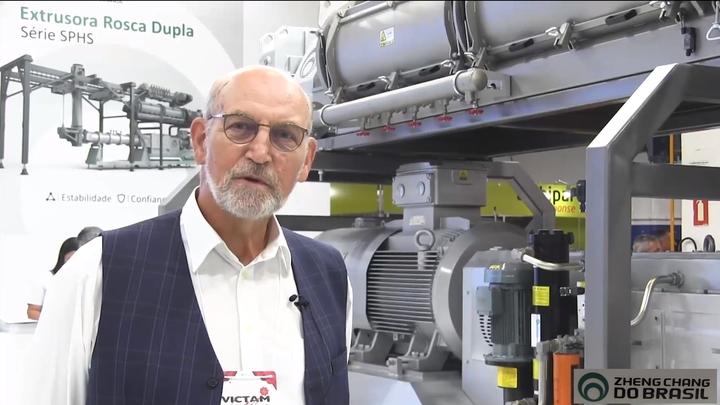Extrusion Cooking Systems for Feed Production. Joe Kearns (Wenger)

Dear Joe,
Hope you are doing great.
Thank you for opening a very interesting topic.
Can you share some more details on the trials you have performed on the tuna feed production? What was the proximate moisture content in the feeding section before steam and slurry addition and what was calculated moisture content in the barrel (counting the steam and slurry part as well)? Did you use glycerol as the humectant? Was it a semi-moist product (16-18%)? What was the model of the extruder?
Thank you in advance,
Radmilo.
Loses its durability? Do you mean disintegrates completely in water?
What would the binding agent do exactly? Increase the water stability of the pellet, or the durability, or the hardness, or combination?
I would like to add a few more comments regarding making sinking vs floating fish feed.
1. Floating or sinking pellets are dependent on the formulation. Both the type of starch and inclusion rate of starch will make a shaped fish feed float. Generally, sinking pellets incorporate less starch and higher fat, with post-fat application likely.
2. Additionally, the type of die plate used will help with expansion (for floating) and gelatinization (binding) of the fish feed. For floating fish feed, a longer land length can assist with more expansion, hence, floating characteristics of the pellet. Alternatively, a shorter land length and more back pressure at the die plate can generate sinking characteristics due to less room for expansion. The type of starch used will affect the amount of gelatinization (or cook) of the fish feed. If a high quality starch is used then the sinking pellets will hold together better. Post-extrusion handling is also important to sort fines (especially with small diameter feeds < 2 mm) that may interfere with the ability of the feed to float vs sink.
3. Extrusion is an adaptable technology for generating shaped products, such as fish feed. Small changes in the formulation of the feed can affect pellet characteristics such as binding, size, shape, and sinking/floating. It is important to work with someone that has experience developing different types of fish feeds to match your application. It is possible to produce aquatic feed with small scale production (about 1 ton per hr), which results in a smaller investment in equipment. This also leaves potential to expand by adding more equipment as the business grows.
To summarize, final desired product will influence what type of extruder (single vs twin screw), scale of production, and types of ingredients you will use in your operation. Feel free to reach out if you have any further questions about the use of extrusion for developing fish feed.
Thank you, Joe Kearns, for starting and continuing the discussion on how extrusion can be used to produce high-quality fish feed.
If you are interested in learning more about the extrusion process and how it can be applied to the aquaculture industry, check out this short course in aquaculture hosted at Texas A&M by PERDC (https://perdc.tamu.edu/event/aquaculture-feed-extrusion-nutrition-and-feed-management-short-course/).


North American Renderers Association (NARA)
Dear Jayaraj, There are a number of feed ingredients which are important, all selected based on the nutrition of the fish being fed. For floating starch is needed at about 20% to insure floating. Feed ingredients need to be ground to a minimum of 1/3 the die hole size. I would think the finer the better for small fish down to about 200 micron.
Dear Halim,
You are correct, attractants can be beneficial to the first feeding. If the fish are started out when young they will eat the feed more readily throughout their growth cycle.
Myself involved in Asian seabass Aquaculture. As you are well aware that, weaning of fry stage is become challenging in marine finfish particularly Asian Seabass. The stability of feed varies from freshwater, brackishwater and then marine. We prefer to have slow sinking type of extruded feed with high protein composition. Whether cooking process during extrusion for slow sinking type of feed can meet the requirements while rearing in various physical water parameters.
On extruded material, on maize gram, we check bulk density & moister what nozzle is the best for this.


North American Renderers Association (NARA)












.jpg&w=3840&q=75)

.jpg&w=3840&q=75)



